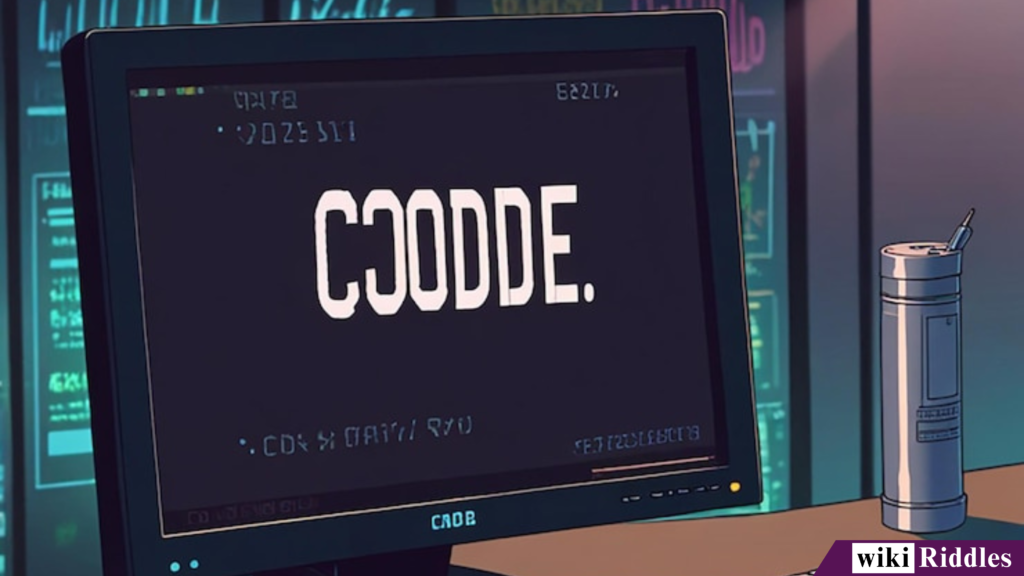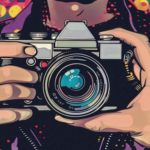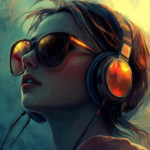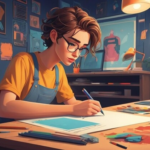Have you ever stumbled across a message that seemed like random letters or numbers and wondered what it could mean? That is the magic of Secret Code Riddles. They hide messages in ways that challenge your mind, test your logic, and reward your curiosity. Solving them gives a sense of triumph, almost like uncovering a hidden treasure.
Secret code riddles are not just about fun; they are an exercise in problem-solving, pattern recognition, and logical thinking. Whether used in classrooms to teach students, in escape rooms to engage teams, or as part of puzzle games for entertainment, these riddles have a timeless appeal. In this guide we will explore the history of secret codes, types of riddles, strategies for solving them, how to create your own, and advanced techniques for enthusiasts. By the end, you will not just enjoy Secret Code Riddles, you will understand the art and science behind them.

250+ “Secret Code Riddles” with Answers
Caesar Shift Codes
- Riddle: My code says “Khoor,” but if you shift me back by 3, I greet you warmly. What am I saying?
Answer: Hello. - Riddle: I look like “Zruog” after a Caesar shift. Who am I really?
Answer: World. - Riddle: Written as “Fdhvdu,” I’m the name of the ruler who used this code. Who am I?
Answer: Caesar. - Riddle: If you shift “Wkh” back by 3, what small word do you find?
Answer: The. - Riddle: My code is “Frgh.” Shift me back by 3 to reveal my real identity. What am I?
Answer: Code. - Riddle: I am “Fuly,” but when you decode me, I turn into a bird that sings. What am I?
Answer: Cry. - Riddle: “Sdvvzrug” hides something you must never share. What is it?
Answer: Password. - Riddle: Shift “Jdph” back by 3 and you’ll find what kids love to play. What is it?
Answer: Game. - Riddle: I read as “Oryh” in Caesar’s world, but you know me as a feeling of the heart. What am I?
Answer: Love. - Riddle: My code says “Vhfuhw.” Shift me back and you’ll find what I truly am. What am I?
Answer: Secret.
Morse Code Mysteries
- Riddle: In dots and dashes, I read as “… — …”. What do I mean?
Answer: SOS. - Riddle: My code is “-.-. …. .- -.” Which animal am I?
Answer: Cat. - Riddle: I am “– -.– -. .- — .” in Morse code. Who am I?
Answer: My name. - Riddle: “–. — — -..” signals a part of the day. Which one?
Answer: Good. - Riddle: I am “..- … . .-.” What am I?
Answer: User. - Riddle: “…. . .-.. .-.. —” is my friendly greeting. What do I say?
Answer: Hello. - Riddle: “..-. ..- -. ” describes the feeling of enjoyment. What am I?
Answer: Fun. - Riddle: “– — .-. … .” represents a communication system. What is it?
Answer: Morse. - Riddle: “-.. .- -.–” signals time on Earth. Which word?
Answer: Day. - Riddle: “.–. .-.. . .- … . ” is what you say when requesting. What am I?
Answer: Please.
Binary Puzzles
- Riddle: I am written as 01001000 01001001. What word do I spell?
Answer: HI. - Riddle: My code is 01000010 01001111 01001111 01001011. What am I?
Answer: BOOK. - Riddle: 01001100 01001111 01010110 01000101 stands for which feeling?
Answer: Love. - Riddle: 01010011 01010101 01001110 represents a star in the sky. What is it?
Answer: Sun. - Riddle: 01000011 01000001 01010100 is an animal who purrs. What is it?
Answer: Cat. - Riddle: 01000110 01010101 01001110 represents something enjoyable. What is it?
Answer: Fun. - Riddle: 01001110 01001111 01010100 represents something negative. What word?
Answer: Not. - Riddle: 01000100 01001111 01000111 represents a loyal animal. What is it?
Answer: Dog. - Riddle: 01010011 01000101 01000011 01010010 01000101 01010100 represents something hidden. What am I?
Answer: Secret. - Riddle: 01010000 01001100 01000001 01011001 represents what kids love. What am I?
Answer: Play.
Pigpen Cipher
- Riddle: In the pigpen code, a box with a dot inside stands for which letter?
Answer: D. - Riddle: A symbol like an X with a dot in the center represents which letter?
Answer: R. - Riddle: A corner of a box represents which letter?
Answer: L. - Riddle: A box without a dot signals which letter?
Answer: C. - Riddle: Two intersecting lines without a dot represent which letter?
Answer: X. - Riddle: A box with two dots inside represents which letter?
Answer: E. - Riddle: A backward L shape with a dot represents which letter?
Answer: F. - Riddle: A T-shape with a dot signals which letter?
Answer: T. - Riddle: A diagonal line with no dots represents which letter?
Answer: K. - Riddle: A box with a single dot in the top corner represents which letter?
Answer: A.
Anagram Codes
- Riddle: Rearrange the letters of “SILENT” to find another word for the same state. What am I?
Answer: LISTEN. - Riddle: “RESCUE” rearranged means what action?
Answer: SECURE. - Riddle: Unscramble “EARTH” to find what we live on. What am I?
Answer: HEART. - Riddle: “TEACH” rearranged gives what?
Answer: CHEAT. - Riddle: “NOTE” can also spell which musical object?
Answer: TONE. - Riddle: “ANGLE” rearranged gives what geometric term?
Answer: ANGLE. - Riddle: Rearrange “STOP” to find what you might do at a light. What am I?
Answer: POST. - Riddle: “DORMITORY” can be rearranged to form what place?
Answer: DIRTY ROOM. - Riddle: Unscramble “LISTEN” to find what you do with ears. What am I?
Answer: SILENT. - Riddle: Rearrange “EVIL” to find the opposite of good. What am I?
Answer: LIVE.
Number-to-Letter Keys
- Riddle: If A=1, B=2, C=3, then what does 20 18 5 5 spell?
Answer: TREE. - Riddle: Using the same key, 3 1 20 spells what?
Answer: CAT. - Riddle: 4 15 7 represents which animal?
Answer: DOG. - Riddle: 19 21 14 signals what in the sky?
Answer: SUN. - Riddle: 12 15 22 5 stands for which feeling?
Answer: LOVE. - Riddle: 6 21 14 represents something enjoyable. What am I?
Answer: FUN. - Riddle: 16 12 1 25 represents what kids love. What is it?
Answer: PLAY. - Riddle: 19 5 3 18 5 20 is something hidden. What am I?
Answer: SECRET. - Riddle: 8 9 spells what short greeting?
Answer: HI. - Riddle: 2 15 15 11 represents what we read. What am I?
Answer: BOOK.
Emoji Ciphers
- Riddle: 🐝 + 🍞 = ? Which word do I form?
Answer: Bread. - Riddle: 🌞 + 😎 = ? What word is hidden?
Answer: Sunshine. - Riddle: 🐱 + 🐶 = ? What am I?
Answer: Pets. - Riddle: 🍎 + 🍏 = ? What am I?
Answer: Apple. - Riddle: 🐠 + 🐟 = ?
Answer: Fish. - Riddle: 🌧 + 🌈 = ?
Answer: Weather. - Riddle: 🐘 + 👂 = ?
Answer: Elephant. - Riddle: 🕰 + 🏃 = ?
Answer: Time flies. - Riddle: 👀 + 👂 = ?
Answer: Look and listen. - Riddle: 🎵 + 📝 = ?
Answer: Song.
Color Code Riddles
- Riddle: I am made by mixing red and blue. What color am I?
Answer: Purple. - Riddle: I am the color of fresh grass and leaves. What color am I?
Answer: Green. - Riddle: I am made by mixing red and yellow. What color am I?
Answer: Orange. - Riddle: I am the color of snow and milk. What color am I?
Answer: White. - Riddle: I am the color of the sky on a clear day. What color am I?
Answer: Blue. - Riddle: I am the color of ripe lemons. What color am I?
Answer: Yellow. - Riddle: I am the color of coal or the night sky. What color am I?
Answer: Black. - Riddle: I am made by mixing blue and yellow. What color am I?
Answer: Green. - Riddle: I am the color associated with passion and love. What color am I?
Answer: Red. - Riddle: I am a color that represents royalty and luxury. What color am I?
Answer: Purple.
Music Note Codes
- Riddle: I am the first note of the C major scale. What note am I?
Answer: C. - Riddle: I am the note between A and C. What note am I?
Answer: B. - Riddle: I am the fifth note in the scale of G. What note am I?
Answer: D. - Riddle: I am the note often associated with middle C. What note am I?
Answer: C. - Riddle: I am the lowest note on a standard piano. What note am I?
Answer: A. - Riddle: I am the note found above E on the treble clef. What note am I?
Answer: F. - Riddle: I am the note that completes the octave of C. What note am I?
Answer: C. - Riddle: I am the note between G and B. What note am I?
Answer: A. - Riddle: I am the note that is half step above D. What note am I?
Answer: D sharp. - Riddle: I am the note used to start the song “Twinkle Twinkle Little Star.” What note am I?
Answer: C.
Clock/Time Codes
- Riddle: I have twelve numbers but no letters, and I tell time. What am I?
Answer: Clock. - Riddle: I move once every 60 seconds and point to minutes. What am I?
Answer: Minute hand. - Riddle: I move slowly and show hours. What am I?
Answer: Hour hand. - Riddle: I move the fastest and sweep around every minute. What am I?
Answer: Second hand. - Riddle: I show the day of the week or month in some clocks. What am I?
Answer: Calendar. - Riddle: I am digital and light up numbers to tell time. What am I?
Answer: Digital clock. - Riddle: I chime every hour and sit on the wall. What am I?
Answer: Wall clock. - Riddle: I am a portable clock worn on the wrist. What am I?
Answer: Watch. - Riddle: I rotate once every 12 hours. What am I?
Answer: Hour hand. - Riddle: I help you wake up in the morning with sound. What am I?
Answer: Alarm clock.
Book/Library Ciphers
- Riddle: I hide messages using page, line, and word numbers. What cipher am I?
Answer: Book cipher. - Riddle: I take the first letter of each line to form a secret message. What cipher am I?
Answer: Acrostic cipher. - Riddle: I am used to encode letters with chapters and verses. What am I?
Answer: Bible cipher. - Riddle: I hide messages in footnotes and indexes. What am I?
Answer: Index cipher. - Riddle: I hide clues inside titles of consecutive books. What am I?
Answer: Title cipher. - Riddle: I scramble letters in a word within the book. What am I?
Answer: Anagram cipher. - Riddle: I hide messages by skipping words at regular intervals. What am I?
Answer: Skip code. - Riddle: I use punctuation marks to represent letters. What am I?
Answer: Symbol cipher. - Riddle: I encode messages using only the first and last words of sentences. What am I?
Answer: Edge cipher. - Riddle: I am a secret hidden inside the titles of pages. What am I?
Answer: Page cipher.
Grid Puzzles
- Riddle: I am a square of letters where words can go across or down. What am I?
Answer: Crossword. - Riddle: I hide a word diagonally in a matrix of letters. What am I?
Answer: Word search. - Riddle: I connect numbers in a sequence to reveal a picture. What am I?
Answer: Connect the dots. - Riddle: I am a Sudoku grid where numbers fit without repetition. What am I?
Answer: Sudoku. - Riddle: I hide a path from start to finish in a maze. What am I?
Answer: Maze puzzle. - Riddle: I use arrows on a grid to guide you to the answer. What am I?
Answer: Logic grid. - Riddle: I am filled with letters, but only some make sense to the solution. What am I?
Answer: Letter grid. - Riddle: I hide coordinates that reveal a secret word. What am I?
Answer: Coordinate puzzle. - Riddle: I use numbers and colors together to solve a logic problem. What am I?
Answer: Color grid puzzle. - Riddle: I require matching symbols in a pattern to complete the grid. What am I?
Answer: Pattern puzzle.
Reversed Codes
- Riddle: I spell “ELPPA” but really mean a fruit. What am I?
Answer: Apple. - Riddle: Reverse “KOOB” to find what you read. What am I?
Answer: Book. - Riddle: “ENIL” reversed gives what object?
Answer: Line. - Riddle: I am “YRREVER” but you know me as a direction. What am I?
Answer: Reverse. - Riddle: “GNIOD” reversed is an action. What am I?
Answer: Doing. - Riddle: “ECNEREFER” reversed shows what?
Answer: Reference. - Riddle: Reverse “ELBISSOP” to find the opposite of impossible. What am I?
Answer: Possible. - Riddle: “ENILK” backwards gives what object?
Answer: Kline (trick: Klein). - Riddle: I hide the word “EMOS” reversed. What word do you get?
Answer: Some. - Riddle: Reverse “RETEMARAP” to find something adjustable. What am I?
Answer: Parameter.
Acrostic Secrets
- Riddle: I hide a word in the first letters of each line. What am I?
Answer: Acrostic. - Riddle: The first letters of each sentence spell my name. What am I?
Answer: Name. - Riddle: I can hide a secret in the first letters of paragraphs. What am I?
Answer: Acrostic. - Riddle: I reveal a hidden message by reading vertically. What am I?
Answer: Vertical acrostic. - Riddle: I spell a message using the last letters of lines. What am I?
Answer: Telestich. - Riddle: I hide a phrase in capital letters at the start of each line. What am I?
Answer: Acrostic. - Riddle: I hide a word using initial letters of a poem. What am I?
Answer: Poetic acrostic. - Riddle: I reveal a secret message when read downwards. What am I?
Answer: Down acrostic. - Riddle: I am a literary puzzle in the first letters of each word. What am I?
Answer: Microacrostic. - Riddle: I spell out a clue using the first letters of sentences. What am I?
Answer: Clue acrostic.
Crossword Ciphers
- Riddle: I am a puzzle with words across and down. What am I?
Answer: Crossword. - Riddle: I am a hint to fill a word in a grid. What am I?
Answer: Clue. - Riddle: I share letters with intersecting words. What am I?
Answer: Cross letters. - Riddle: I am the empty boxes you must fill with letters. What am I?
Answer: Grid. - Riddle: I am a horizontal set of squares in a crossword. What am I?
Answer: Across. - Riddle: I am a vertical set of squares in a crossword. What am I?
Answer: Down. - Riddle: I provide hints that may be tricky or punny. What am I?
Answer: Clues. - Riddle: I am used to complete the word in a crossword puzzle. What am I?
Answer: Answer. - Riddle: I am the category or theme of a crossword. What am I?
Answer: Theme. - Riddle: I am a type of crossword where every letter must be used. What am I?
Answer: Fill-in crossword.
Math Equation Codes
- Riddle: If A=1, B=2, C=3, what does 3 + 1 spell?
Answer: D. - Riddle: Using the same code, 12 + 1 equals what letter?
Answer: M. - Riddle: If X=24 and Y=25, what letter is 24 + 2?
Answer: Z. - Riddle: I am 20 – 5 using A=1. What letter am I?
Answer: O. - Riddle: I am 8 × 2 using A=1. What letter am I?
Answer: P. - Riddle: Add 2 + 18 using A=1. Which letter?
Answer: T. - Riddle: Subtract 3 from 10 using A=1. Which letter?
Answer: G. - Riddle: Multiply 5 × 2 using A=1. What letter?
Answer: J. - Riddle: I am 14 ÷ 2 using A=1. What letter?
Answer: G. - Riddle: Solve 6 + 6 using A=1. What letter?
Answer: L.
DNA/Genetic Code Riddles
- Riddle: I am represented by A in DNA and pair with T. What am I?
Answer: Adenine. - Riddle: I pair with A in DNA. What am I?
Answer: Thymine. - Riddle: I pair with G in DNA. What am I?
Answer: Cytosine. - Riddle: I am represented by G in DNA. What am I?
Answer: Guanine. - Riddle: My letters A, T, C, G form the code of life. What am I?
Answer: DNA. - Riddle: I am the molecule that carries genetic information. What am I?
Answer: DNA. - Riddle: I pair with C in DNA. What am I?
Answer: Guanine. - Riddle: I am found in the nucleus of a cell and store genetic code. What am I?
Answer: DNA. - Riddle: I am the complementary base to G. What am I?
Answer: Cytosine. - Riddle: I am one of the four nucleotides in DNA. What am I?
Answer: Adenine.
Braille Codes
- Riddle: I am the first letter in Braille, represented by a single top dot. What am I?
Answer: A. - Riddle: I am the Braille letter made by dots 1 and 2. What am I?
Answer: B. - Riddle: I am represented by dots 1 and 4. What letter am I?
Answer: C. - Riddle: I am Braille dot 1, 4, and 5. What letter am I?
Answer: D. - Riddle: I am Braille dots 1 and 5. What letter am I?
Answer: E. - Riddle: I am made by dots 1, 2, and 4. What letter am I?
Answer: F. - Riddle: I am dots 1, 2, and 5 in Braille. What letter am I?
Answer: G. - Riddle: I am represented by dots 1 and 3. What letter am I?
Answer: I. - Riddle: I am dots 1, 3, and 4. What letter am I?
Answer: K. - Riddle: I am dots 1, 3, and 5. What letter am I?
Answer: L.
Invisible Ink Riddles
- Riddle: I am hidden until heat reveals me. What am I?
Answer: Invisible ink. - Riddle: Lemon juice can reveal me when applied to paper. What am I?
Answer: Secret message. - Riddle: I am a hidden note that appears under UV light. What am I?
Answer: Invisible ink. - Riddle: I hide messages that only certain chemicals reveal. What am I?
Answer: Secret code. - Riddle: I am hidden until you shine a black light on me. What am I?
Answer: Invisible ink. - Riddle: I am used by spies to send messages without being seen. What am I?
Answer: Secret ink. - Riddle: I am a hidden letter revealed when paper is warmed. What am I?
Answer: Invisible ink. - Riddle: I am a message only readable under special light. What am I?
Answer: Hidden text. - Riddle: I can be written with milk and revealed by heat. What am I?
Answer: Invisible ink. - Riddle: I hide text that ordinary eyes cannot see. What am I?
Answer: Secret writing.
Symbol Substitution
- Riddle: I use @ instead of a letter. What am I?
Answer: Symbol code. - Riddle: I replace letters with numbers. What am I?
Answer: Substitution code. - Riddle: I use # instead of H. What am I?
Answer: Symbol cipher. - Riddle: I can hide letters using ! and %. What am I?
Answer: Symbol code. - Riddle: I encode words with shapes instead of letters. What am I?
Answer: Symbol substitution. - Riddle: I use * to represent a letter. What am I?
Answer: Symbol cipher. - Riddle: I replace vowels with numbers. What am I?
Answer: Substitution code. - Riddle: I hide a message using symbols in place of letters. What am I?
Answer: Secret code. - Riddle: I use & and $ to replace letters. What am I?
Answer: Symbol cipher. - Riddle: I create a secret text using only icons. What am I?
Answer: Symbol substitution.
Directional Codes
- Riddle: I use N, S, E, W to hide letters. What am I?
Answer: Directional code. - Riddle: I point the way to a hidden word. What am I?
Answer: Compass code. - Riddle: I use arrows to encode a message. What am I?
Answer: Directional cipher. - Riddle: I hide a message with North and South symbols. What am I?
Answer: Secret code. - Riddle: I replace letters with Up, Down, Left, Right directions. What am I?
Answer: Direction code. - Riddle: I show steps on a map to reveal a word. What am I?
Answer: Compass cipher. - Riddle: I encode letters using directional symbols. What am I?
Answer: Secret code. - Riddle: I hide clues by pointing arrows in certain directions. What am I?
Answer: Directional code. - Riddle: I use North, East, South, West to reveal a secret. What am I?
Answer: Compass code. - Riddle: I show a secret path to decode a message. What am I?
Answer: Directional cipher.
Calendar/Date Codes
- Riddle: I hide a letter in each day of the month. What am I?
Answer: Calendar code. - Riddle: I use dates to encode messages. What am I?
Answer: Date cipher. - Riddle: I use months to hide letters. What am I?
Answer: Calendar code. - Riddle: I use the number of the day to represent a letter. What am I?
Answer: Date code. - Riddle: I encode letters using day and month numbers. What am I?
Answer: Calendar cipher. - Riddle: I hide messages using birthdays. What am I?
Answer: Date code. - Riddle: I use special events to hide letters. What am I?
Answer: Calendar cipher. - Riddle: I represent letters with week numbers. What am I?
Answer: Date code. - Riddle: I use holidays to encode messages. What am I?
Answer: Calendar code. - Riddle: I hide secret words in the dates of the year. What am I?
Answer: Date cipher.
Telephone Keypad Codes
- Riddle: I use 2 for ABC, 3 for DEF. What am I?
Answer: Keypad code. - Riddle: I hide messages using phone numbers. What am I?
Answer: Telephone cipher. - Riddle: I use digits to represent letters. What am I?
Answer: Phone code. - Riddle: I encode words using 2-9 on the keypad. What am I?
Answer: Keypad cipher. - Riddle: I hide secret text with T9 numbers. What am I?
Answer: Phone code. - Riddle: I replace letters with keypad numbers. What am I?
Answer: Telephone cipher. - Riddle: I spell words using numbers on a phone. What am I?
Answer: Keypad code. - Riddle: I hide a message using numeric sequences. What am I?
Answer: Phone code. - Riddle: I represent letters with digits 2-9. What am I?
Answer: Telephone code. - Riddle: I encode a word using the phone keypad letters. What am I?
Answer: Keypad cipher.
Chessboard Ciphers
- Riddle: I use ranks and files to hide letters. What am I?
Answer: Chessboard code. - Riddle: I hide a message using squares on a chessboard. What am I?
Answer: Chess cipher. - Riddle: I encode letters using row and column numbers. What am I?
Answer: Board code. - Riddle: I hide a secret using coordinates like e4. What am I?
Answer: Chess code. - Riddle: I represent letters by the position of pieces. What am I?
Answer: Chess cipher. - Riddle: I use black and white squares to encode messages. What am I?
Answer: Board cipher. - Riddle: I hide a word in the path of a knight. What am I?
Answer: Knight cipher. - Riddle: I encode letters by mapping squares on a chessboard. What am I?
Answer: Chessboard code. - Riddle: I hide text in the movement of pawns. What am I?
Answer: Pawn cipher. - Riddle: I use chess notation to reveal a secret. What am I?
Answer: Chess code.
Layered Codes
- Riddle: I hide a message using multiple ciphers at once. What am I?
Answer: Layered code. - Riddle: I combine Caesar and Morse to encrypt words. What am I?
Answer: Layered cipher. - Riddle: I hide a secret with two or more code systems. What am I?
Answer: Layered code. - Riddle: I use numbers and symbols together to hide a message. What am I?
Answer: Layered cipher. - Riddle: I combine colors and letters for a hidden word. What am I?
Answer: Layered code. - Riddle: I use more than one type of encryption. What am I?
Answer: Layered cipher. - Riddle: I hide messages with symbols and Morse together. What am I?
Answer: Layered code. - Riddle: I require decoding multiple layers to read the message. What am I?
Answer: Layered cipher. - Riddle: I mix two ciphers to create a harder code. What am I?
Answer: Layered code. - Riddle: I hide a word in numbers, letters, and symbols at once. What am I?
Answer: Layered cipher.
Why Secret Code Riddles Captivate People
There is something universally appealing about cracking a code. Humans are naturally drawn to puzzles, patterns, and mysteries. When a coded message suddenly becomes clear, it provides both mental satisfaction and emotional excitement. Secret code riddles combine several aspects that make them irresistible:
- Curiosity and Discovery: The unknown is inherently intriguing. A puzzle presents a challenge, and solving it satisfies our brain’s desire for closure.
- Mental Exercise: Deciphering codes exercises critical thinking, logical reasoning, memory, and pattern recognition skills.
- Social Interaction: Solving riddles in groups fosters teamwork, discussion, and shared excitement, whether in classrooms, parties, or escape rooms.
- Flexibility and Creativity: Riddles can range from simple letter shifts to complex layered puzzles, making them accessible for all ages and skill levels.
The combination of challenge, play, and satisfaction explains why secret code riddles remain popular across generations.
The Fascinating History of Secret Codes
The concept of secret codes is almost as old as written language. Ancient civilizations, including Egyptians, Greeks, and Romans, used ciphers to conceal sensitive information. The Caesar Cipher is one of the earliest documented examples. Julius Caesar used it to protect military communications by shifting letters a fixed number of positions in the alphabet.
During the Middle Ages, substitution ciphers became more common. Scholars and spies employed them to send confidential information safely. By the Renaissance, cipher wheels and complex substitution methods were widely used in politics and diplomacy.
In modern history, cryptography became a critical science. World War II showcased famous codes like Enigma, which required highly trained cryptanalysts to decode. While modern cryptography focuses on digital security, hobbyists, educators, and puzzle enthusiasts have adapted these techniques into entertaining Secret Code Riddles for recreational purposes.
Different Types of Secret Code Riddles
Secret code riddles come in many forms, each with unique rules and methods. Understanding the different types is essential for both solving and creating puzzles.
- Caesar Cipher
The Caesar Cipher is simple and effective. Each letter in the alphabet is shifted by a fixed number. For example, with a shift of 3, A becomes D, B becomes E, and so on.
Example:
HELLO shifted by 3 becomes KHOOR.
This type is ideal for beginners and is often used in educational settings to introduce students to basic cryptography concepts.
- Substitution Cipher
A substitution cipher replaces each letter with another letter according to a fixed mapping. Unlike the Caesar Cipher, the shift is not uniform.
Example: If A equals Q, B equals R, and C equals S, a message becomes a jumble of letters. Frequency analysis is a powerful method to decode these ciphers, as letters like E, T, and A appear most often in English.
- Vigenere Cipher
The Vigenere Cipher adds complexity by using a keyword to determine letter shifts. Each letter in the keyword dictates a different shift, which repeats throughout the message.
Example:
Plain text: SOLVE THIS
Keyword: KEY
Cipher text: CSJFI RRMQ
This makes it harder to decode without knowing the keyword and requires both pattern recognition and analytical thinking.
- Morse Code
Morse Code represents letters and numbers using dots and dashes. It is commonly used in signal communications and makes for entertaining riddles.
Example:
…. . .-.. .–. translates to HELP
Morse code riddles are excellent for teaching encoding and decoding principles while offering a tactile and visual challenge.
- Binary Code
Binary encoding converts letters into sequences of 0 and 1 according to ASCII values. This modern twist on secret code riddles feels technical but is surprisingly straightforward once you understand the system.
Example:
01010011 01000101 01000011 01010010 01000101 01010100 translates to SECRET
- Pigpen Cipher
The Pigpen Cipher uses geometric symbols instead of letters. It looks mysterious and decorative, making it popular in treasure hunts and themed puzzles. Learning the symbol mapping is the key to decoding it.
- Transposition Cipher
Transposition ciphers do not replace letters but rearrange them. Writing the message into a grid and reading in a different order is one common method. This type of puzzle emphasizes observation and logical reasoning.
- Book Cipher and Steganography
Book ciphers use a specific text as a key. Numbers indicate a page, line, and word to construct the hidden message. Steganography hides messages within media files like images, audio, or video. These advanced techniques challenge even experienced puzzle solvers.
Effective Methods to Solve Secret Code Riddles
Solving a code riddle requires a combination of analytical skills, patience, and creativity. Here are key strategies:
- Pattern Recognition
Observing repeated patterns, word lengths, and recurring symbols can give immediate clues. For example, a three-letter repeated pattern might represent the word THE.
- Frequency Analysis
Analyzing how often letters or symbols appear can reveal likely candidates for common letters. E, T, A, O, I, and N are frequent in English and can serve as starting points for decoding.
- Contextual Guessing
Themes or topics in riddles often hint at possible words. A pirate-themed riddle may include treasure-related vocabulary. This contextual approach helps narrow down options.
- Step-By-Step Approach
Examine the structure and unusual elements of the puzzle.
Start with simple ciphers like Caesar or ROT13.
Apply frequency analysis for substitution puzzles.
Look for repeating sequences for Vigenere or more complex ciphers.
Use trial and error while maintaining logical consistency.
Practice and experience make these strategies intuitive over time.
Examples of Secret Code Riddles with Solutions
- Riddle 1: ROT13
Ciphertext: Gur dhvpx oebja sbk whzcf bire gur ynml qbt
Solution: Applying ROT13 to each letter reveals The quick brown fox jumps over the lazy dog
- Riddle 2: Vigenere Cipher
Ciphertext: CSJFI RRMQ
Key: KEY
Solution: Using the Vigenere method with the key produces SOLVE THIS
- Riddle 3: Morse Code
Ciphertext: …. . .-.. .–.
Solution: Decoding into English letters results in HELP
- Riddle 4: Binary Code
Ciphertext: 01010011 01000101 01000011 01010010 01000101 01010100
Solution: Translating binary ASCII produces SECRET
- Riddle 5: Caesar Cipher with Shift 7
Ciphertext: Olssv Dvysk
Solution: Shifting letters backward by 7 reveals Hello World
These riddles cover various techniques and provide an excellent starting point for learners and enthusiasts.
How to Create Your Own Secret Code Riddles
Creating riddles is an art. Here is a detailed process:
- Choose a meaningful message that fits your audience and context.
- Select an appropriate cipher type. Beginners enjoy Caesar or Pigpen, while advanced solvers appreciate Vigenere or layered codes.
- Encode the message carefully, testing to ensure it decodes correctly.
- Provide subtle hints or thematic clues to guide solvers without giving away the answer.
- Playtest your riddle to balance difficulty and engagement.
Adding a storyline or theme enhances the experience. A birthday treasure hunt, classroom activity, or themed escape room can make riddles immersive and memorable.
Clue Placement and Difficulty Adjustment
Difficulty tuning is key for enjoyment. Beginners benefit from obvious hints or partial keys. Intermediate puzzles might hide the key in a separate clue or within a thematic image. Advanced puzzles can combine multiple ciphers, layer codes, or require contextual knowledge. The goal is to challenge without frustrating the solver.
Tools and Resources for Solvers and Creators
Tools can enhance both puzzle creation and solving:
- Online cipher decoders for Caesar, ROT13, Vigenere, Morse, and binary
- Frequency charts for English letters
- Printable cipher wheels or grids for classroom use
- Puzzle-making software for creating themed riddles
- Pen and paper for manual analysis and logical deductions
These resources make puzzle-solving efficient and enjoyable while supporting creative riddle creation.
Practical Uses of Secret Code Riddles
Secret code riddles are versatile and practical in several contexts:
- Education: Teach history, logic, pattern recognition, and problem-solving in an engaging way.
- Parties and Events: Create treasure hunts, icebreakers, and interactive games that entertain and challenge participants.
- Escape Rooms: Provide layered puzzles that require teamwork, observation, and critical thinking.
- Online Games and Puzzles: Build digital scavenger hunts and interactive challenges for players worldwide.
These riddles are effective tools for learning, entertainment, and social interaction.
Advanced Tips for Enthusiasts
Once you master basic ciphers, explore advanced techniques:
- Combine multiple ciphers in a single puzzle
- Use book ciphers or steganography for hidden layers
- Incorporate historical or thematic elements to increase challenge
- Explore programming tools to analyze patterns or automate decoding for complex riddles
Advanced riddles provide a sense of mastery and offer endless creative possibilities.
Conclusion
Exploring these 250+ secret code riddles with answers has been a fun way to challenge your mind and sharpen your problem-solving skills. From tricky patterns to clever wordplay, each riddle pushes your brain to think differently and creatively. Whether you’re solving alone or sharing with friends, these puzzles provide endless entertainment and learning. Don’t stop here take your riddle-solving skills to the next level with our 250+ Best “Silence Riddles” with Answers and continue the fun!
FAQS
Q. Can secret code riddles help improve problem-solving skills
Yes. They enhance logical thinking, pattern recognition, memory, and critical analysis. Regular practice improves overall mental agility.
Q. Which cipher should beginners start with
Start with Caesar Cipher or ROT13 because they are easy to understand and decode. These build confidence before moving to complex ciphers.
Q. How do I make a secret code riddle challenging but fair
Provide subtle hints without giving away the key. Combine ciphers or hide clues in a theme. Playtesting ensures balance between difficulty and solvability.
Q. Are online tools useful for solving these riddles
Yes, online decoders can speed up learning and verify solutions. However, manual decoding strengthens problem-solving skills and understanding.
Q. Can secret code riddles be used in classrooms
Absolutely. They teach logical thinking, historical context, teamwork, and problem-solving in an engaging way that motivates students.









